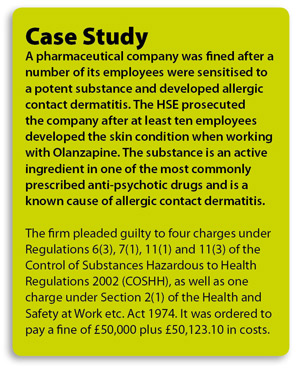Chemical Symbols and Label Changes
 Changes will be made to the chemical warning labels used on a variety of professional and consumer products as part of a United Nations sponsored programme to harmonise the labels on a global process.
Changes will be made to the chemical warning labels used on a variety of professional and consumer products as part of a United Nations sponsored programme to harmonise the labels on a global process.
The timing of the switch depends on whether the chemical is a pure substance or a component in a mixture. Substances had to be classified, labelled and packaged in conformance with the new Regulations by 1 December 2010, although substances already on the shelves on that date can continue to be supplied until 1 December 2012. The corresponding dates for mixtures are 1 June 2015 and 1 June 2017. The Chemical Hazards communication has created a handy guide for users that can be accessed at www.understandthelabel.org.uk
Under COSHH the onus is on the employer to identify the hazardous properties of all the substances in use and assess health risks due to the way they are used and the potential exposure of workers and others affected by the work.
This broad definition covers substances in the form of solids, liquids, gases, fumes, dusts, fibres, mists, vapours, and biological agents (‘germs’).
 Examples include:
Examples include:
- chemical substances or preparations, such as paints;
- cleaning materials;
- metals;
- asphyxiate gases;
- welding fumes;
- pesticides and insecticides; and
- biological agents such as pathogens or cell cultures.
Where prevention is not possible then exposure must be adequately controlled by applying the principles of good control practice. There are many thousands of substances hazardous to health used in industry and other workplaces, but only a few hundred have been assigned exposure limits.
Label changes
Changes will be made to the chemical symbols on warning labels used on a variety of professional and consumer products over the coming years as part of a United Nations sponsored programme to harmonise the labels on a global basis.
The warning symbols currently used will be replaced with a range of new symbols. The design of the new symbols comprises a white diamond with red borders containing a black pictogram. Some of the new symbols are similar to the previous versions and are easily recognised, but several are new. To help users familiarise themselves with the new labels, the Chemical Hazards Communication Society (CHCS) has created a handy guide for users that can be accessed at www.understandthelabel.org.uk.
Stuart Longworth, Chairman of the CHCS, commented: “The Regulations governing the new labels are an essential part of the Globally Harmonised System of Classification and Labelling of Chemicals (GHS). They will make life easier for consumers when they travel and businesses when they import and export products because there will eventually only be one set of symbols to deal with throughout most of the world.”
 In order to give industry and consumers time to adapt to this new system, manufacturers can continue using the ‘old’ warning labels over a transitional period.
In order to give industry and consumers time to adapt to this new system, manufacturers can continue using the ‘old’ warning labels over a transitional period.
The timing of the switch depends on whether the chemical is a pure substance or a component in a mixture. Substances had to be classified, labelled and packaged in conformance with the new Regulations by 1 December 2010, although substances already on the shelves on that date can continue to be supplied until 1 December 2012. The corresponding dates for mixtures are 1 June 2015 and 1 June 2017.
